Chapter 6
Streaming Movies and TV Shows
IN THIS CHAPTER
![]() Installing apps for movie and TV streaming services
Installing apps for movie and TV streaming services
![]() Searching Fire TV for movies and TV shows
Searching Fire TV for movies and TV shows
![]() Taking a look at some free streaming services
Taking a look at some free streaming services
![]() Controlling movie and TV show playback
Controlling movie and TV show playback
![]() Adding a second screen to your streaming experience
Adding a second screen to your streaming experience
Fire TV sure has a ton of tricks up its sleeves, and I take you through all of them — such as playing music, viewing photos, and surfing the web — later in the book. However, when you get right down to it, you probably bought your Fire TV device to do just two things — watch movies and TV shows — am I right? I knew it. Nothing wrong with that, of course, because Fire TV excels at streaming video content.
So, this chapter is devoted exclusively to using Fire TV to watch movies and TV show episodes. You learn how to install streaming apps, search for content, handle subscriptions, control playback, and much more. I’ll wait here while you pop some popcorn, and then we’ll get the show started.
Installing a Streaming Media App
Although your Fire TV comes with a few Amazon apps preinstalled — particularly Amazon Prime Video, Amazon Photos, and Amazon Music — before you can watch or even check out any other streaming content, you need to install the appropriate app on your Fire TV device.
Here’s the procedure to run through to install an app on Fire TV:
- From the Fire TV Home screen, choose the Apps tab.
- Choose the app you want to install.
-
Choose the Get button, shown in Figure 6-1.
Choosing Get authorizes Amazon to “purchase” the app through your Amazon account. All movie and TV apps are free to download, however, so you won’t be charged anything.
Note, too, that if you’ve previously purchased a Fire TV app (say, using a different Fire TV device), then you see a Download button instead of the Get button.
Fire TV downloads and then installs the app. When the install is complete, you see the Open button, as shown in Figure 6-2. In the lower-right corner of the screen, you also see a notification that the app is ready to launch (again, see Figure 6-2; note that this notification only appears onscreen for a few seconds).
-
Choose Open or, if the notification is still onscreen, press Menu.
Fire TV runs the app.
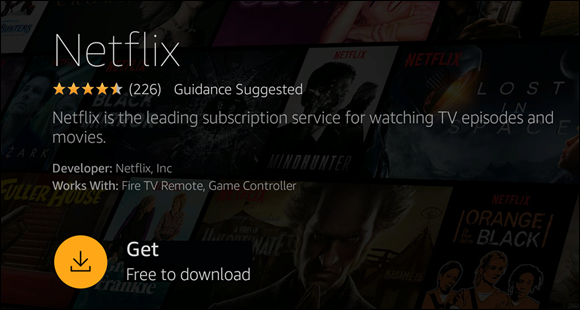
FIGURE 6-1: Open the app and choose Get to download it.
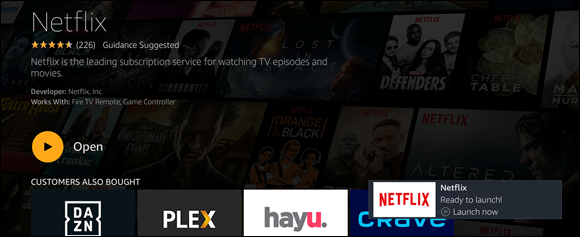
FIGURE 6-2: You see the Open button and the Ready to Launch notification after the app installation is complete.
Searching for Movies and TV Shows
After you settle in to the Fire TV experience, it doesn’t take long before you realize there is a ton of stuff to watch! If you’re an Amazon Prime member, you’ve got hundreds of TV shows and thousands of movies to check out. And the more streaming apps you install, the more content is at the tip of your fingers (or the tip of your tongue). Just installing YouTube alone gives you access to several billion (that’s right, I said billion) videos, mostly of cats.
When you realize just how much content you have at your disposal, the very next realization is usually, “How in the name of Jeff Bezos am I supposed to find what I want?” Fire TV helps you out by displaying your most recently used apps in the Recent row of the Home screen, but many people new to Fire TV complain that they seem to spend great chunks of their precious leisure time scrolling through the Fire TV interface to find the app, show, or movie they want.
Fortunately, there’s a better way: Fire TV offers three different techniques to search for the content you want to watch:
- Amazon catalog search: This is the general Fire TV search, and it looks through all the content that’s part of the Amazon catalog of movies, TV shows, apps, and games. This catalog includes not only Amazon content, but also content from third-party apps that have implemented Amazon’s Universal Search feature.
- Fire TV in-app search: This is a search that Fire TV runs on the content in a specific app. As I write this, Fire TV can only search within three apps: Amazon Music (see Chapter 8), Silk (Amazon’s web browser; again, see Chapter 8), and YouTube.
- Third-party in-app search: This is a search feature that a streaming service has added to its Fire TV app.
Searching the Amazon catalog
To perform a global search of the Amazon catalog on Fire TV, press Home to return to the Fire TV Home screen (if you’re not there already), and then choose the Search tab (the magnifying glass icon to the left of the Home tab; see Figure 6-3).

FIGURE 6-3: Open the Fire TV Search screen by choosing the Search tab.
After you have the Search screen displayed, you have three ways to initiate a search:
- The hard way: Use the Alexa Voice Remote navigation ring to choose each character of your search text using the onscreen keypad.
- The easier way: With the Fire TV mobile app connected to your Fire TV device, swipe down in the navigation area to move the selector into the onscreen keypad, which automatically displays the Fire TV mobile app keyboard. Now type your search request.
- The easiest way: Press and hold the Voice button on the Alexa Voice Remote (or drag down and hold the Voice button in the Fire TV mobile app; or, if you have Fire TV Cube or a similar Alexa-enabled device, just say “Alexa”) and then tell Alexa what you want to find.
Whatever method you prefer, the trick is to use some combination of keywords that tells Fire TV what you’re looking for. There are five main types of keywords you can use:
- “[app]” (for example, “YouTube”)
- “[content]” (for example, “cats”)
- “[title]” (for example, “Star Trek”)
- “[type]” (for example, “TV show”)
- “[genre]” (for example, “science fiction”)
Some searches require only one keyword, but most of the time you’ll want to combine two or more keywords to narrow your search. Here are some examples:
- “[title] [type]” (for example, “Star Trek TV show”)
- “[content] [genre] [content]” (for example, “music documentary Queen”)
The secret to efficient searching is to make your searches specific enough that you find what you’re looking for, but not so wordy that Fire TV shrugs its shoulders and gives up. For example, this search doesn’t work very well:
- “The fourth Star Trek movie”
However, this pithier version works just fine:
- “Star Trek Four”
If you run a voice search and Fire TV isn’t certain what you said, it displays a list of possible searches, as shown in Figure 6-4. Choose the search text you want Fire TV to run. If you don’t see the search request you want, press Menu to type the search text instead.

FIGURE 6-4: If Fire TV isn’t quite sure what you said, it displays a list of possible searches.
One final note about voice searching using Fire TV Cube (or an Alexa-enabled smart speaker): When Alexa returns multiple results, those results are numbered, as shown in Figure 6-5. You can use the following voice commands to navigate this list:
- Scroll the list to the right: “Alexa, scroll right” (or “Alexa, show more” or “Alexa, next”).
- Scroll the list to the left: “Alexa, scroll left” (or “Alexa, previous”).
- Choose a result: “Alexa, choose X,” where X is the number of the item you want. Instead of “choose,” you can say “select,” “open,” or “play.”
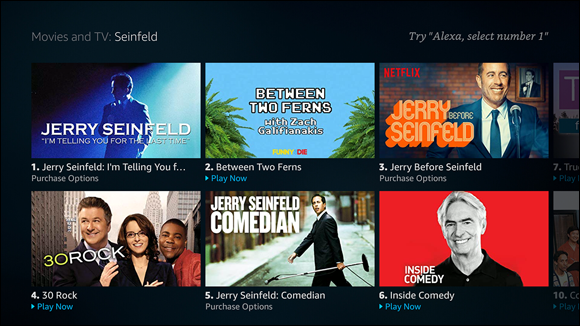
FIGURE 6-5: With a Fire TV Cube search, Alexa displays a numbered list like the one shown here.
Searching within an app using Fire TV
In the previous section, I mention several keyword types you can use for searching, including the name of an app, the title of a show, and a content description. I also mentioned that you can combine keywords, so you may think you can perform a search like this:
- “[app] [content]” (For example, “Netflix dogs”)
That command works *if* the app has added its content to the Amazon Universal Search catalog. Otherwise, the command fails because Fire TV doesn’t know how to search within the app. I explain how to search within apps in the next section, but for now I can tell you that there are (at least as I write this) three apps that Fire TV does know how to search: Amazon Music, Silk (Amazon’s Fire TV web browser), and YouTube.
To send a search request to one of these apps, run a global Fire TV search as I describe in the previous section. In the search results, you see a row titled Search in Apps, which includes a tile each for YouTube, Internet (that’s the Silk browser), and Amazon Music, as shown in Figure 6-6. Choose one of these apps, and Fire TV passes along your search request to the app.
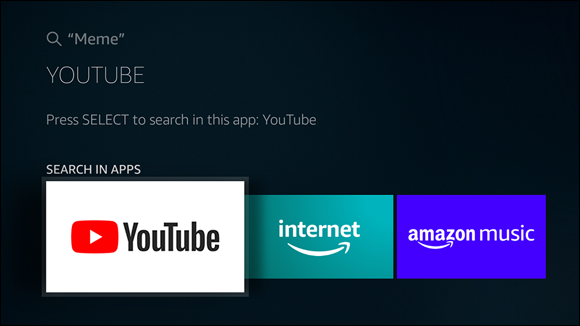
FIGURE 6-6: Use the Search in Apps row to pass along your search text to one of the apps shown.
You can also use voice commands to search Amazon Music and YouTube (for some reason, Silk doesn’t respond to voice commands):
- “Find [video] in YouTube,” where video is a video title or keyword (for example, “Find cats in YouTube”).
- “Find [music] in Amazon Music,” where music is a genre or the name of a song, album, or artist (for example, “Find salsa in Amazon Music”).
Using an app’s search feature
I mention in the preceding section that Fire TV can’t search within most apps (with Amazon Music, Silk, and YouTube being the exceptions). That’s not a huge problem, however, because most streaming apps implement their own search feature. For example, Figure 6-7 shows the search interface for the YouTube app.

FIGURE 6-7: The in-app search feature of the YouTube app.
That’s the good news. The bad news is that, just to keep us all on our toes, each app’s search feature is slightly different, so there’s no standard procedure I can give you. Fortunately, almost all apps do implement two search techniques:
- The search feature is marked by a magnifying glass icon (shown on the left side of the screen in Figure 6-7), similar to one in the Fire TV menu bar.
- You enter your search text using an onscreen keypad (shown on the right side of the screen in Figure 6-7), which means you can also enter the text using the Fire TV mobile app’s keyboard.
Streaming on the Cheap with Free Services
It’s most unfortunate that a significant portion of people who are new to Fire TV believe that after they’ve purchased a Fire TV device, the entire world of streaming media is available to them without incurring any extra charges. Would that it were true! So, I hope I’m not dashing your hopes too cruelly when I tell you that most streaming services require a paid subscription.
- Amazon Prime Video: Well, okay, this one’s only “free” if you already have a Prime membership. However, if you’re a paid-up member of Amazon Prime, then look out, because you get free access to a massive catalog of TV shows and movies, including lots of original Amazon content, such as award-winning shows like The Marvelous Mrs. Maisel and Fleabag. The Fire TV Home screen even has a row dedicated to original Amazon programming that broadcasts in 4K Ultra-High Definition (if your TV supports that format).
- IMDb TV: Install the IMDb TV app to view popular TV shows and blockbuster Hollywood movies, all free because IMDb TV is supported by advertising. Note that, as I write this, IMDb TV is only available to residents of the United States.
- Tubi: Install the Tubi app to get access to thousands of TV shows and movies. Yep, it’s all completely free, but you’ll have to suffer through, er, I mean, watch a few ads along the way.
- YouTube: Install the Fire TV YouTube app to get immediate access to the kazillions of videos that YouTube offers. As I mention in the preceding section, Fire TV knows how to search within the YouTube app, so any video you need is but a quick search away.
Subscribing to TV and Movie Streaming Services
You may find everything you need to be a happy couch potato in Amazon Prime Video, YouTube, and the other free streaming services I mention in the previous section. However, it’s more likely that there will be premium cable channels (such as HBO and Showtime) and live news and sports channels that reside in your “Must Have” list. That means you’re going to have to pay a monthly subscription to one or more streaming services to get the content you want.
How you subscribe depends on how you navigate to the content. For example, if you install and then open an app that requires a subscription, you usually see a Subscribe button, as shown in Figure 6-8. If subscription content comes up in a Fire TV search, then you usually see a Watch with [Service] 30-Day Free Trial button (where [Service] is the name of the streaming service), as shown in Figure 6-9.

FIGURE 6-8: Subscription services usually offer a Subscribe button when you start the app.
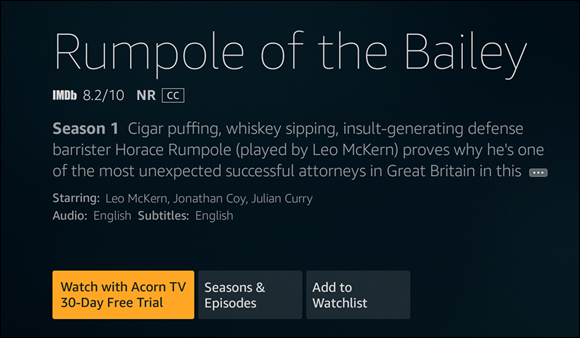
FIGURE 6-9: Most streaming services offer a trial period to watch content.
However, instead of relying on the Fire TV interface to initiate your subscription, it’s usually easier and faster to go to the streaming service’s website and set up your subscription there. Be sure to sign up for whatever free trial is offered, just to make sure you like the service before paying for it.
Buying or Renting a Movie or TV Show
One of the major benefits of being an Amazon Prime member is that you get access to tons of movies and TV shows at no extra charge through the Amazon Prime Video app. It’s a binge-watcher’s paradise. If, on the other hand, you’re not a member of Amazon Prime, you can still access all those shows, but you need to either buy or rent them on your Fire TV device using Amazon Instant Video.
Here are the steps to follow to buy or rent a movie or TV show:
- Locate the movie or TV shows you want to buy or rent.
- Choose the movie or TV show to display its product details.
-
Choose either the Buy button or the Rent button.
Amazon uses your 1-Click payment method to charge the rental or purchase to your account.
- To watch the content, you have two choices:
- To watch the content right away, choose the Watch Now button.
- To watch the content later, navigate to the Fire TV Your Videos tab, and then open the content from the Your Videos screen.
Watching a Movie or TV Show
When it’s time to watch a movie or TV show, you first need to locate the content you want to view. Fire TV gives you a bunch of options:
- Search for the movie or TV show, as I describe earlier in the “Searching for Movies and TV Shows” section.
- Resume (or rewatch) recent content by navigating to the Home screen’s Recent row.
- Choose the Your Videos tab, and then use the Watchlist row to access content you’ve added to your Amazon Watchlist. Your Videos also includes recommendations from subscription services.
- Choose the Movies tab to see featured and recommended movies from Amazon and your subscription movie services.
- Choose the TV Shows tab to see featured and recommended TV shows from Amazon and your subscription TV services.
When you choose a movie or TV show, you first see a details screen that describes the content. Figure 6-10 shows a typical details screen for Amazon content, which offers the following controls:
- Watch Now with [Service]: Choose this button to start watching the content (where [Service] is the name of the streaming service that offers the content). If the content is a movie, it starts right away; if the content is a TV show, Fire TV begins playing the first episode of the first season.
- Seasons & Episodes: For a TV show, choose this button to navigate the show’s seasons and the episodes within each season. In this case, navigate to the episode you want to view, and then choose that episode’s Watch Now button.
- Add to Watchlist: For Amazon content, choose this button to add the content to your Amazon watchlist for later viewing.
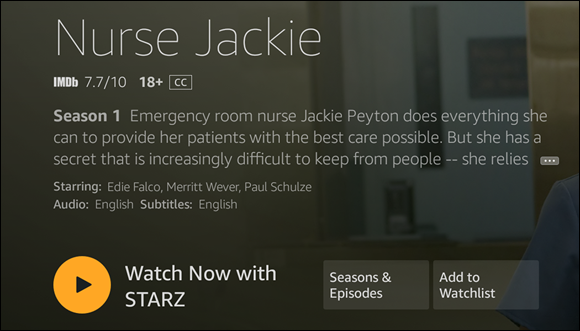
FIGURE 6-10: The details screen for a TV show.
For non-Amazon content, choosing the movie or TV show opens the app of the streaming service that offers the content, where you usually see at least a Play button.
Controlling playback
Use your Alexa Voice Remote (or the remote feature in the Fire TV mobile app) to control playback using the following buttons:
- Play/Pause: Pause and restart the content.
- Rewind: Go back in the content as follows:
- Press Rewind once to rewind by ten seconds.
- Press and hold Rewind for a few seconds, and then release the button to continuously rewind at low speed.
- While rewinding at low speed, press Rewind again to continuously rewind at medium speed.
-
While rewinding at medium speed, press Rewind again to continuously rewind at high speed.
 While rewinding at high speed, press Rewind again to switch to the low-speed rewind.
While rewinding at high speed, press Rewind again to switch to the low-speed rewind. - To stop rewinding, press Play/Pause.
- Fast Forward: Go forward in the content as follows:
- Press Fast Forward once to fast-forward by ten seconds.
- Press and hold Fast Forward for a few seconds, and then release the button to continuously fast-forward at low speed.
- While fast-forwarding at low speed, press Fast Forward again to continuously fast-forward at medium speed.
-
While fast-forwarding at medium speed, press Fast Forward again to continuously fast-forward at high speed.
 While fast-forwarding at high speed, press Fast Forward again to switch to the low-speed fast-forward.
While fast-forwarding at high speed, press Fast Forward again to switch to the low-speed fast-forward. - To stop fast-forwarding, press Play/Pause.
- Volume Up: Raise the volume one notch; press and hold Volume Up to raise the volume quickly.
- Volume Down: Decrease the volume by one value; press and hold Volume Down to decrease the volume quickly.
- Mute: Toggle the volume off and on.
If you’re more of a voice person, you can control playback using the following commands:
- “Pause”
- “Resume”
- “Rewind” (rewinds ten seconds)
- “Fast forward” (fast-forwards ten seconds)
- “Volume up”
- “Volume down”
- “Set volume to X” (replace X with the volume setting you want)
- “Mute”
- “Unmute”
Setting playback options
While you’re watching a TV show or movie, you can press the Menu button to see a list of options for the content, as shown in Figure 6-11. Depending on the content, you see some or all of the following:
- Next Up: For a TV show, play the next episode.
- Watch from Beginning: Restart the current TV show or movie.
- Subtitles: Toggle subtitles for the content (and choose a subtitle language).
- Audio: Set audio options such as the language and the type of audio output (usually either Dolby Digital Plus or Stereo).
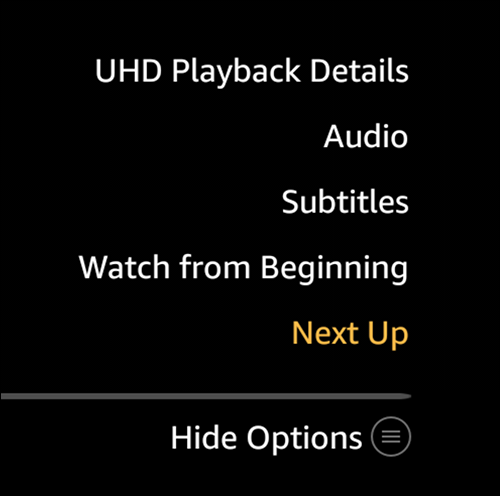
FIGURE 6-11: During playback, press Menu to see a list of options.
Peeking at cast or music info
It’s happened to all of us a million times: You’re watching a TV show or movie and you think, “Hey, what’s that actor’s name?” or “Ooh, I like this music — I wonder who does it?” Normally, you either have to wait until the end of the show to get your answer in the credits (if you’re lucky), or you pull out your smartphone and start Googling the actors or Shazaming the music.
Fortunately, Fire TV offers a better method. It’s called X-Ray, and it enables you to take a quick peek at info related to the current scene (X-Ray Quick View) or the overall show (Full Screen X-Ray). X-Ray is powered by the famous (and famously comprehensive) Internet Movie Database (IMDb).
First, note that not all shows support X-Ray, although a remarkable number do. To know whether X-Ray is available, check out the show details. If you see the X-Ray label, as shown in Figure 6-12, then you’re good to go.

FIGURE 6-12: Look for the X-Ray label in the show’s info.
When you’re watching an X-Ray-able show and you just need to know more about what’s going on, display X-Ray Quick View by pressing the navigation ring’s Up button on your Alexa Voice Remote. Fire TV continues to play the show, but along the bottom of the screen you see the current scene’s cast members and a tile for any music that plays in the current scene. Figure 6-13 shows an example. To hide the X-Ray info, press the Down button.

FIGURE 6-13: Press the navigation ring’s Up button to see the current scene’s cast and music.
If you’re really curious about the show, display Full Screen X-Ray by pressing the Up button twice (or by pressing Play/Pause and then pressing Up). Fire TV pauses the show and displays Full Screen X-Ray, as shown in Figure 6-14. There are four tabs you can traverse here:
- Scenes: Displays a list of the show’s scenes, which you can use to navigate quickly from one scene to another.
- In Scene: Shows the cast members and music that are part of the scene you’re currently watching.
- Cast: Shows a complete list of the show’s cast.
- Music: Shows a complete list of the songs played during the show.

FIGURE 6-14: An example of Full Screen X-Ray.
When you’re done, you can return to the show by pressing the remote’s Play/Pause button.
Viewing mobile content on your Fire TV Stick device
If you’ve got TV shows or movies on your mobile device, wouldn’t it be great to watch that content on your big-screen TV? It sure would, and it just may be possible. Fire TV supports a feature called mirroring that takes whatever is displayed on a mobile device screen and also displays it on the Fire TV device. Sounds extremely cool, doesn’t it? But there are some catches:
- Mirroring only works with Fire TV Stick. If you have a Fire TV Cube or a Fire TV Edition device, you’re out of luck.
- Your mobile device must be an Android phone (running Android 4.2 or later), a Fire HD tablet, or a Fire phone. Sorry, iOS isn’t supported.
To get started, first put your Fire TV Stick device into Display Mirroring mode. You have two choices:
- Choose Settings ⇒ Display & Sound ⇒ Enable Display Mirroring.
- Press and hold the Home button to display the Fire TV shortcuts, and then choose the Mirroring icon, as shown in Figure 6-15.
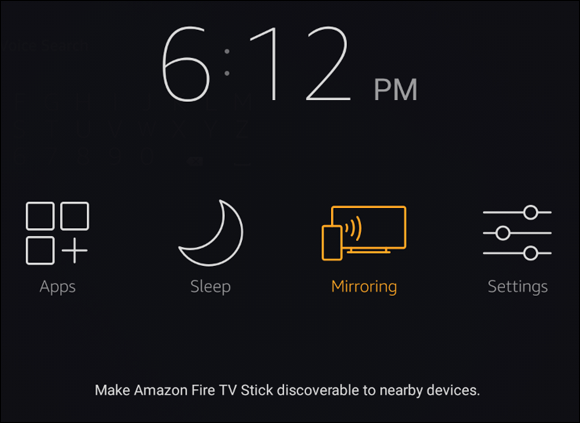
FIGURE 6-15: Press and hold Home, and then choose Mirroring.
Now turn to your mobile device, which should be within about 30 feet of your Fire TV Stick, registered to the same Amazon account, and connected to the same Wi-Fi network. Open the mobile device’s settings and activate the device’s screen mirroring option. The name of the option varies depending on the version of Android your device uses, but here are some possibilities to search for:
- Cast Screen
- Display Mirroring
- Miracast
- Quick Connect
- Screen Mirroring
- Screen Sharing
- Smart View
- Wireless Display
- Wireless Mirroring
When you’re done mirroring the mobile device screen to your Fire TV Stick, press any button on the Alexa Voice Remote to take your Fire TV Stick out of Display Mirroring mode.
Connecting Fire TV to a second screen device
In modern streaming media lingo, a second screen experience means you watch the media on a main screen (such as your TV), and you use a second screen (such as tablet or smartphone) to control playback and display extra info about the media, such as the cast and music info I talk about earlier (see “Peeking at Cast or Music Info”).
The second screen experience is what all the cool kids are doing nowadays, so if you want to be cool, too, then you need the following:
- A second screen device, which can be a Fire HD tablet (version 6 or later); a Kindle Fire HD (second generation or later) or HDX; or a Fire phone.
- The second screen device and your Fire TV device connected to the same Wi-Fi network. (Actually, this is optional, but everything seems to work better if both devices are on the same network.)
- The second screen device and your Fire TV registered to the same Amazon account.
If you’ve checked off all those boxes, then your first step is to configure your Fire TV device to use a second screen device. Choose Settings ⇒ Display & Sounds, and then turn the Second Screen Notifications setting to On.
Now pick up your second screen device, use Amazon Prime Video to open the TV show or movie you want to watch, and then tap the Watch on Fire TV button.
The content begins playing on your Fire TV, while your second screen device displays playback controls and X-Ray info (if available) about the content.

 In the search requests that follow, remember that if you’re using a Fire TV Cube or other Alexa-enabled device, be sure to precede the search request with the wake word Alexa.
In the search requests that follow, remember that if you’re using a Fire TV Cube or other Alexa-enabled device, be sure to precede the search request with the wake word Alexa.